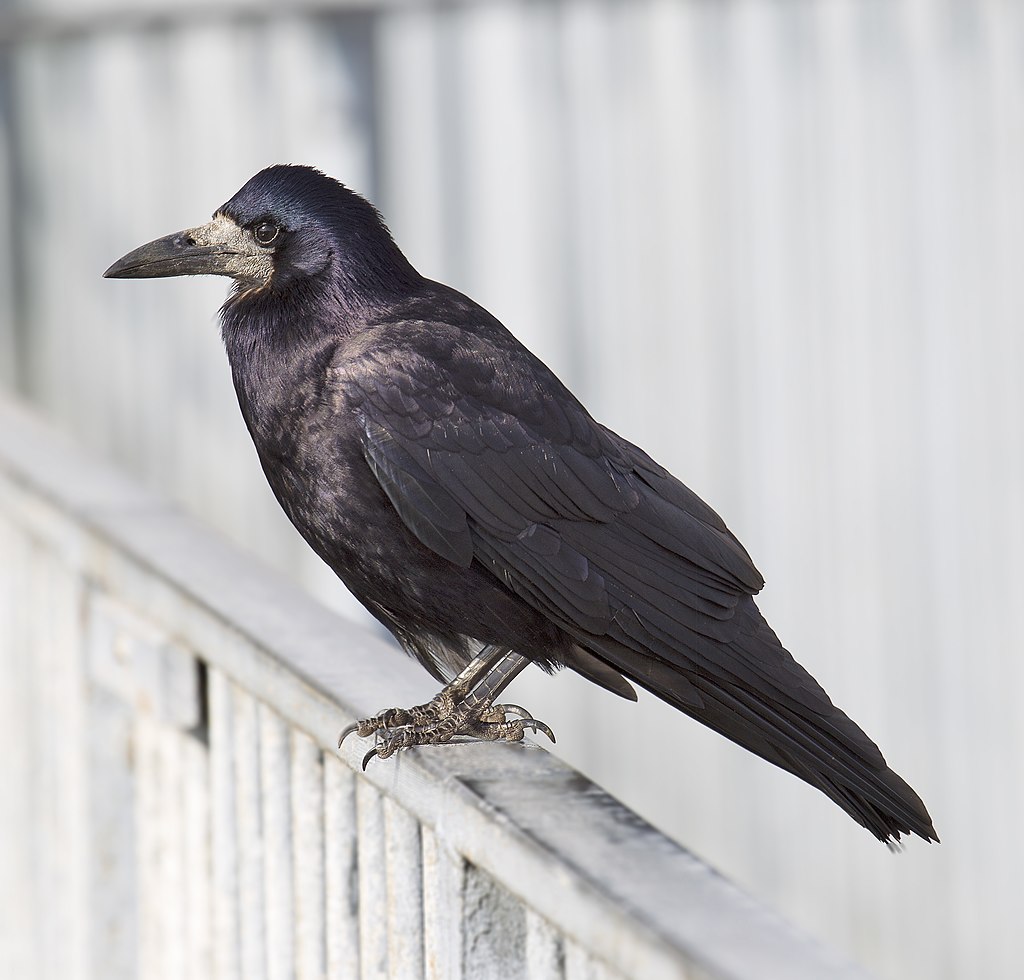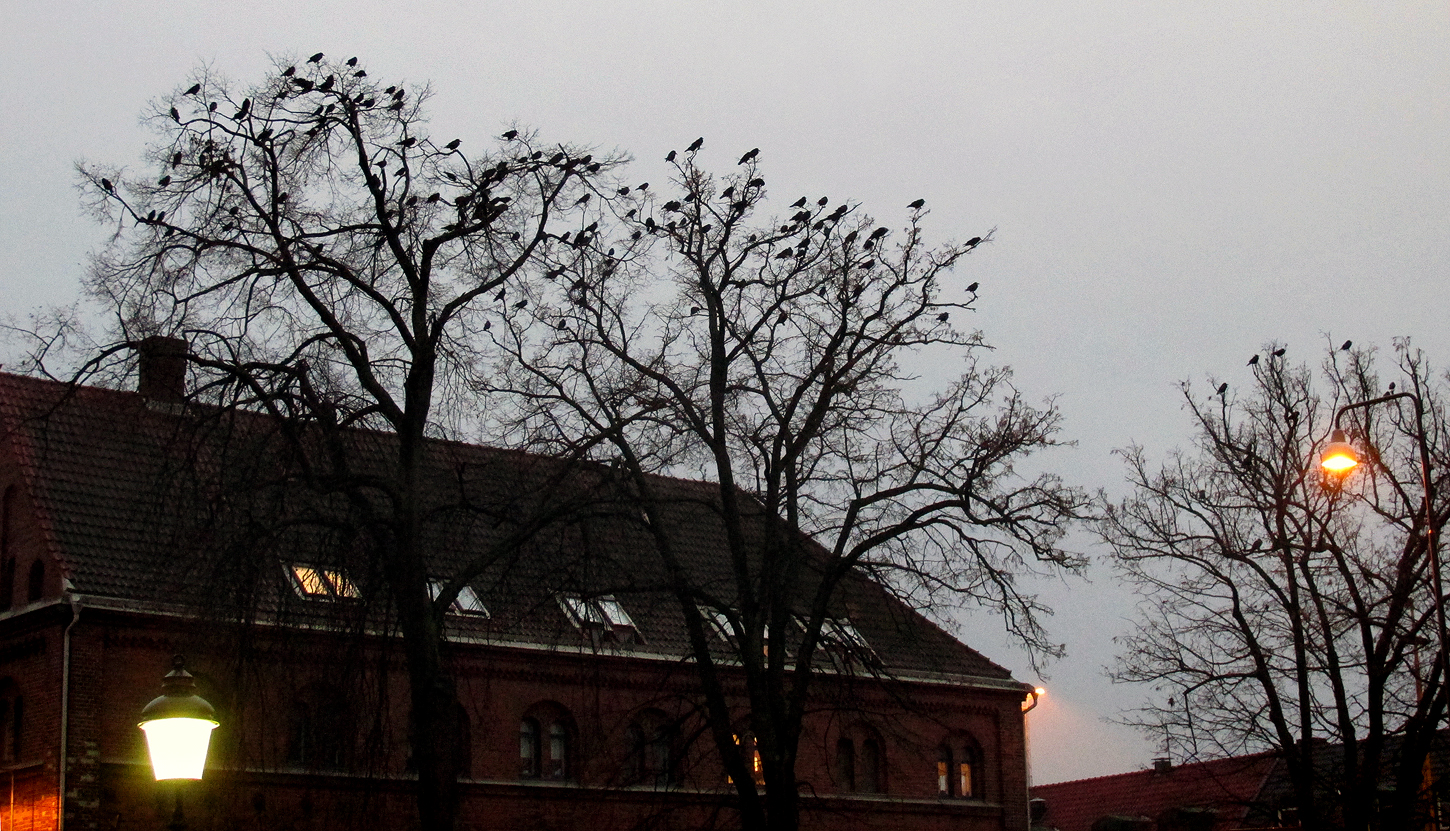Garden Wildlife
Garden Wildlife


Rook Corvus frugilegus
Rooks are primarily farmland birds favouring pasture and arable fields, but also common in woodland and villages. They are recorded in 5-7% of gardens, mainly in suburban and rural settings.
What do they look like?
At 43-48 cm body length rooks are very slightly smaller than carrion crows. They are glossy black all over except for a prominent white beak. They have thick feather cover on their upper legs, making them look as if they are wearing plus-four trousers. They have a swaggering walk that is rather endearing, frequently stabbing their large beaks into the grass looking for food. See our crows page for comparisons with their relatives.
What do they sound like?
They have a harsh nasal "kaah" call which is loud and carries a long way. When you come across a large rookery the noise is remarkable and unpopular with neighbours.
Single bird Rookery noise
.jpg)

What do they eat?
Typical generalist crows, rooks eat beetles, worms and other invertebrates as well as grains, small mammals, bird eggs and nestlings, and roadkill. Farmers dislike their interference with root and cereal crops, and they were much persecuted in the past.
Albert Lastukhin, XC679201. Accessible at www.xeno-canto.org/679201
Beatrix Saadi-Varchmin, XC700163. Accessible at www.xeno-canto.org/700163.

How are they doing?
Rook numbers have dropped by a quarter since 2000, but seem to have stabilised with a breeding population of about 1,100,000 pair in the UK. They are found throughout Britain and Ireland, but avoid high ground in the north and in Wales
Finding out more:
BTO profile on rook
RSPB profile on rook
Page written and compiled by Steve Head
What do they do?
Rooks are very social birds, and it is said that if you see one crow it's a crow, if lots they are rooks. They sometimes seem to play together, especially while flying, with tumbling and diving displays together.
They particularly like nesting in large noisy colonies or rookeries near the tops of trees. Groups of rooks are termed a "parliament" or a "clamour"
How are they doing?
Rook numbers have dropped by a quarter since 2000, but seem to have stabilised with a breeding population of about 1,100,000 pair in the UK. They are found throughout Britain and Ireland, but avoid high ground in the north and in Wales
Finding out more:
Page written and compiled by Steve Head
What do they do?
Rooks are very social birds, and it is said that if you see one crow it's a crow, if lots they are rooks. They sometimes seem to play together, especially while flying, with tumbling and diving displays together.
They particularly like nesting in large noisy colonies or rookeries near the tops of trees. Groups of rooks are termed a "parliament" or a "clamour".
What do they eat?
Typical generalist crows, rooks eat beetles, worms and other invertebrates as well as grains, small mammals, bird eggs and nestlings, and roadkill. Farmers dislike their interference with root and cereal crops, and they were much persecuted in the past.
What do they look like?
At 43-48 cm body length rooks are very slightly smaller than carrion crows. They are glossy black all over except for a prominent white beak. They have thick feather cover on their upper legs, making them look as if they are wearing plus-four trousers. They have a swaggering walk that is rather endearing, frequently stabbing their large beaks into the grass looking for food. See our crows page for comparisons with their relatives.
What do they sound like?
They have a harsh nasal "kaah" call which is loud and carries a long way. When you come across a large rookery the noise is remarkable and unpopular with neighbours.
Single bird Rookery noise
.jpg)

Rook Corvus frugilegus
Rooks are primarily farmland birds favouring pasture and arable fields, but also common in woodland and villages. They are recorded in 5-7% of gardens, mainly in suburban and rural settings.























